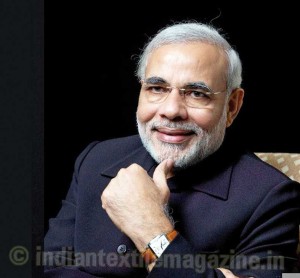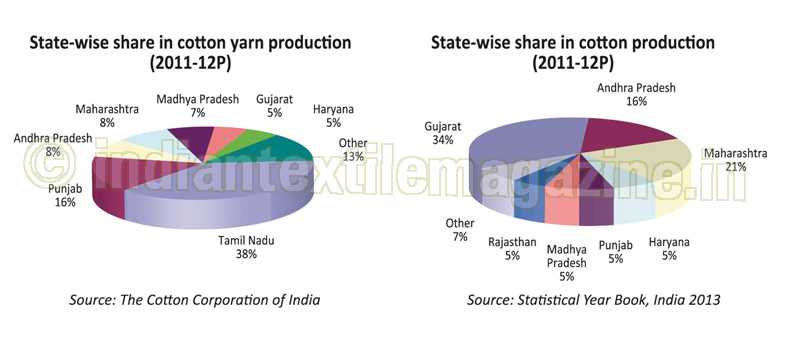By Naishadh Parikh, Chairman, CII Regional Sub-Committee on Economic Affairs, and Chairman & Managing Director, Equinox Solutions Ltd.

Gujarat has unique strengths with respect to the textile industry. It is now the largest producer of cotton in India, with a share of over one-third of the total cotton production. It is also the largest manufacturer of man-made and filament fabric and the second largest manufacturer of cotton fabric and has a dominant share in the production of denim with a one billion metre capacity. The State contributes to over one-fourth of the country’s technical textiles output.
Gujarat has the highest number of medium and large textile processing houses and is home to more than 50 per cent of India’s processing machinery manufacturers and 90 per cent of weaving machinery manufacturers.
The State’s progress across various segments in the textile value chain has not been uniform. In 2011-12, Gujarat produced the highest cotton output of 120 lakh bales (1 bale = 170 kg) in India. In spite of this, the State ranked sixth in cotton yarn production because of inadequate spinning capacities. Consequently, more than 90 per cent of its cotton output is sent out to other States for value addition.
The State also lags behind in garment production because of unavailability of skilled manpower. These factors limit the ability of the textile industry in Gujarat to capitalise on abundant raw material availability and also its ability to earn higher per unit realisation on value-added products.
To attract higher investments and to bridge the existing gaps in the textile value chain, the State Government announced the Gujarat Textile Policy-2012 in September 2012. This policy laid down an integrated approach from Fibre to Fashion to transform its cotton industry as a leader in manufacturing of yarn, fabric and garment. It stressed development of the 5Fs – Farm, Fibre, Fabric, Fashion (Garment) and Foreign (Export). The policy has schemes that provide assistance for developing infrastructure, enhancing skills and modernising technology to make the textile industry competitive both in domestic and international markets.
Under the new textile policy, the State Government has announced a credit linked interest subsidy scheme. New spinning units or the existing units (100 per cent cotton, blended or spun yarn) undertaking expansion, diversification or modernisation can avail a maximum subsidy of seven per cent. Readymade garment and made-up units are also eligible for similar subsidy. Other textile weaving and processing units are eligible for subsidy of five per cent. Spinning units will also be eligible for power tariff concession of a rupee amount and assured supply of lignite (for units having captive power plant) for a period of five years.

The policy provides VAT concession to units across the textile value chain from cotton to garment to made-ups in Gujarat for the entire value of the eligible fixed capital investments in plant and machinery. It also offers interest subsidy for units manufacturing technical textiles.
Technical textiles being niche products, preferred for their technical performance and specific functional properties, command premium realisations. The State has around 900 units engaged in 12 sub-sectors of technical textiles.
Under the policy, the Government has also devised various schemes to enhance the supply of skilled manpower. These schemes include financial assistance to apparel training institutions and trainees and assistance for training to powerloom sector. There are schemes that provide financial assistance for energy and water conservation and environmental compliance, in addition to assistance for acquiring and upgrading technology.
To expand the textile manufacturing base, the policy also provides support for establishing textile and apparel parks in the State.
To leverage on availability and proximity of cotton, comfortable power supply and to bring in the latest technology, the textile industry in the State pitched itself as a favorable destination for investments. A few Chinese textile firms have evinced interest in setting up units in the State. This move is strategic for the State given that China is the single largest exporter of textile goods to the US with a share of over one-third in the global fabric and apparel market.
The announcement of the new textile policy and other pro-industry steps taken by the State Government will go a long way in unlocking the full potential of Gujarat’s textile industry. However, it will be some time before the real impact of these measures become evident.